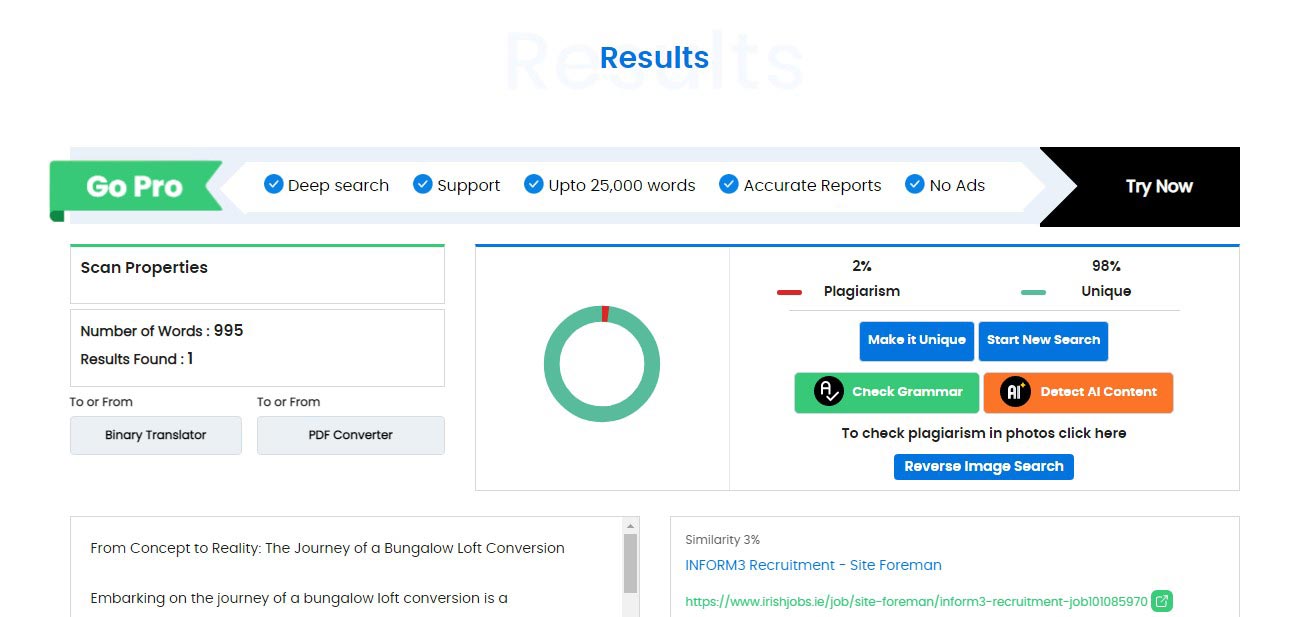From Concept to Reality: The Journey of a Bungalow Loft Conversion
Embarking on a bungalow loft conversion is a transformative experience that blends architectural ingenuity with the homeowners’ aspirations. So is quite an undertaking! The process usually involves converting an under-utilised residence into a larger and more functional living space.
The journey encapsulates creativity with practicality, resulting in a loft space that enhances the property’s value but also provides an extra bedroom or ensuite, or office, within the footprint of the existing bungalow.
Planning initially begins with the design phase in which factors like improved layout and structural feasibility are given top priority. Once you are satisfied with the design you can proceed to the construction stage. With skilled craftsmanship and attention to detail you are on the way to creating your dream home.
There are a wide variety of bungalow loft conversion ideas: take your time to read magazine features and research similar schemes online, compiling a file of things you’d like to incorporate.
The process will often be challenging so make sure you collaborate with skilled architects and builders to overcome hurdles and achieve the desired end result.
Want to know more about the process of bungalow loft conversion?
Keep reading. In this article, we cover the challenges and processes of converting your bungalow.
The process of transforming a single storey dwelling into a multi-functional haven:
1. Initial Considerations:
- The decision to embark on a loft conversion starts with a careful evaluation of available space, budget constraints, and local building regulations.
- Challenges include assessing structural feasibility and ensuring the existing foundation can support the additional load.
- At the outset, it is absolutely crucial to determine if planning permissions are required and to fully understand local building regulations.
2. Design and Planning:
- Touchstone lofts design team play a pivotal role in crafting design solutions that seamlessly integrate the new loft space and staircase within the existing structure.
- Follow the national planning approval procedure while making sure that local rules are followed. Obtain necessary approvals from local authorities before commencing any construction.
3. Structural Modifications:
- Reinforcing the existing structure to accommodate the added load of the loft involves a professional assessment of load-bearing walls and foundations.
- Contract a structural engineer to assess the load-bearing capacity of the existing structure and to provide the builder with calcs for material procurement.
- Thoroughly identify any necessary modifications to support the additional load of the loft and get these properly costed to avoid nasty surprises at the end.
- Expect challenges to arise in maintaining the structural integrity of the bungalow while introducing significant modifications, for instance the requirement for scaffolding and engineering props, and even underpinning.
4. Roof Alterations:
- Converting a loft often requires altering the roof structure, which may involve raising the roof height or incorporating dormer windows.
- Challenges include weatherproofing during construction and maintaining the aesthetic appeal of the original design.
5. Utility Integration:
- To guarantee efficiency and adherence to safety regulations, it is essential to strategically plan the extension of utilities and the best positions for HVAC (heating, ventilation, air-con kits), electrical wiring, and plumbing to the newly constructed room/s.
- Overcoming the challenge of seamlessly integrating new utilities without compromising existing functionality is a key milestone. A good plumber is worth their weight in gold at this stage.
6. Construction:
- Executing the conversion involves experienced craftsmanship. A professional builder will be well equipped to encounter any challenges; from sourcing quality materials to scheduling timely deliveries to meet the build programme and preventing storage bottlenecks on site.
- Weather conditions and unexpected structural setbacks may further contribute to the complexity of the conversion process. Stay calm, your builder will have seen it all before and should be able to draw on a bank of knowledge to guide you through.
- Always commence the construction process adhering to the approved plans and timelines.
7. Quality Checks and Inspections:
- Schedule inspections as necessary to obtain certifications and approvals.
- Conduct thorough quality checks to ensure all construction and finishing meet required standards.
- Address any issues identified during inspections, such as water board approvals.
- Add final touches to enhance aesthetics and functionality.
8. Interior Finishing:
- Complete the interior finishing with proper insulation, drywall, flooring, and any other customisations specified in the design.
- Ensure chosen fixtures and fittings are to your desired needs.
- The final stage involves transforming the new space into a functional and aesthetically pleasing dormer bungalow. You might wish to employ the services of an interior designer to help you create your dream room.
9. Cost Considerations:
- Throughout the journey, managing costs can be a challenge. Unforeseen issues, design changes, and material fluctuations can impact the budget. Keep in close contact with your builder and ask for regular updates.
- It is important to set a realistic budget and a contingency plan to include unforeseen financial challenges, allow around 10% as a safety net.
Challenges you might encounter with a conversion:
There are always building challenges, that’s why we call it the building game. The conversion of a bungalow loft presents a unique set of challenges, demanding careful navigation throughout the process:
- Structural considerations will top the list, as the existing framework may need reinforcement to support the added weight and changes in load distribution.
- Next on the list are design challenges. These usually arise when maximising the space while trying to adhere to local building codes and regulations. Accessibility can be a hurdle, as integrating stairs or an elevator into the bungalow’s layout requires thoughtful planning.
- Securing the required permissions and approvals might be difficult due to bureaucracy. You may also face budgetary restrictions in the process. So, make sure to use strategic decision-making to strike a compromise between price and quality.
However, with good coordination between all the various professionals, from architects to electricians, plumbers to structural engineers, the culmination should be a rewarding transformation and seamless conversion.
Final Verdict:
A loft conversion should be a harmonious blend of creativity, engineering acumen, and project management skills. Bungalow loft conversions offer a great solution to maximise living space without compromising the charm of these unique single-level homes. The transformation will hopefully enhance the property value and accommodate growing needs.
Touchstone Lofts stands out as a premier choice for conversions, seamlessly merging expertise with innovation. Their commitment to quality craftsmanship and client satisfaction sets them apart.
With a proven track record, TouchStone Lofts transforms visions into reality by incorporating a myriad of well tried-and-tested bungalow loft conversion ideas. The company also provides meticulous attention to detail and adherence to timelines.
Choosing TouchStone Lofts for your bungalow loft conversion ensures quality and functionality backed by a building guarantee. Elevate your living experience and property value with Touchstone Lofts, where every conversion is a testament to our dedication to building excellence.

